In the official record books, it is written that the cycling Tour of Austria, today raced in six or eight stages during the days of the more prestigious Tour de France, “officially” began in 1949, after two shorter editions, of four stages, were held in 1947 and 1948, and called Through Austria. However, a proper Tour of Austria in three stages took place in the summer of 1933 and was organized by Socialdemocratic cycling federation (ARBÖ) that was affiliated to a general Austrian Workers sport federation (ASKÖ) and to the international, but not the Soviet Union-oriented, Socialist sport movement (SWSI).
- Melk rail crossing
The Tour originated in a particular socio-political context. The first proposal emerged in the spring of 1932. After the undeniable success of Workers Olympics of Vienna in the summer of 1931, ASKÖ multiplied the events, following, inevitably, the trends of the bourgeois movement, with the creation of numerous competitions and new championships, inaugurating others that until then were unpracticed disciplines for Workers. Moreover, ASKÖ had pushed SWSI to create in 1932 the European football championships and SWSI also stimulated another European championship, this one for weightlifting.
This ‘mushrooming’ of events might have been risky for a proper Marxist sport that differentiated itself from the bourgeois movement. In order to follow orthodox principles, SWSI and ASKÖ fought the cult of champions, prioritized team over individual events, allowed tables of records, while stressing the increase of membership, improving the overall standard of the performances and inviting the winners to share generously, their prizes and diplomas with the beaten contestants. The Party tried to mobilize the champions for propagandizing the disciplines and as testimonials for the Socialist ideals, however, this was generally resisted by the contestants.
In 1932, ARBÖ had surpassed the membership of its bourgeois counterpart (ÖRB) which was deprived of financial resources, with deeper divisions between the sub-federations representing the länder (regions). The core of the ARBÖ membership resided in Vienna, Lower and Upper Austria and Styria. A Tour of Austria did not exist in the bourgeois area. In 1932, the firm Semperit sponsored a Tour of Lower Austria, but it was more of a Grand Prix event, which collated the results of four discrete stages, raced on completely separate days, sometimes weeks apart.
- Cheering crowds on the route
ARBÖ established their own three-stage Tour of Austria, to be held on three consecutive days crossing Vienna, Lower and Upper Austria and Styria, with the inclusion of a red jersey for the leaders. ARBÖ chose red, as a symbol of the Marxist movement, indicating the revolutionist march of the Proletarian movement towards a free and authentic human society. In the two most important international Tours, those of France and Italy, the leaders wore yellow and pink jerseys respectively. In 1931, Fascism added the fascio littorio to the reverse of the jersey, a power symbol for Ancient Rome whose triumphal era Fascism would renew. Fascism was the main target of the political campaign of Austrian social democracy, Italy being an ally of the Austrian Christian Socialist government
In comparison with other Tours, ARBÖ added new features, inspired by the Marxist ideology: not only the provisional and final leaders in the standings or classification would don the red jersey, but also the winners of each of the individual stages would wear the red jersey in the following stage, as well as any competitor who had held the overall lead would keep his red jersey. For ARBÖ, this meant more ‘visible’ winners, hence showing the possibilities for ordinary Social democratic people to gain victory and thus be included in the march towards a successful revolution, after all, more winners equals more companions in the fight. Keeping your hard won red jersey, even if you lost the leadership of the Tour meant that your contribution to the revolution remained both intact and visible. However, a contradictory point to this collective policy was the time limit applied, as in the bourgeois Tours, this meant that stage by stage, some riders lost their right to be on the starting line in the successive stage. In 1932, ARBÖ almost casually introduced the red jersey to a track competition, the Party wanted the symbol to become popular, at least superficially.
- Bruck an der Mur.
Unfortunately, 1933 proved more turbulent than 1932, on 4 March the Parliament closed and the government of Chancellor Dollfuss became increasingly authoritarian, passing laws limiting the liberties of the Social Democratic Party, which, for its own part, adopted tactics that proved too passive and mistakenly believing in the negotiations with the government until the tragic days of February 1934, when the repression cancelled Social Democracy.
- Karl Hamedl who won in Vienna
In this atmosphere of political and social juxtaposition, the Tour of Austria, whose distance now amounted to 555 kilometers, was very successful, even more so than it’s parallel, Semperit’s Tour of Lower Austria which was held on 30 April, 21 May, 11 June and 2 July with 31 riders. Fifty-two cyclists competed in ARBÖ’s Tour held from 3rd to 5th June, from Vienna through Melk in Lower Austria (first stage, 127 km), from Amstetten in Lower Austria through Linz and Wels in Upper Austria up to Bruck an der Mur in Styria (second stage, 278 km), then back to Vienna (third stage, 150 km) with 33 classified riders completing the race. A parallel motorcycle race also took place.
Along the route, some 90,000 spectators, a number estimated by the newspaper Kleine Blatt, co-organizer of the event, cheered enthusiastically saluting the cyclists with the closed fist fighting gesture of the Marxist movement, to which many of the competitors returned in kind. There were many refreshment stalls on the side of the roads as well as orchestras and singers. However, in Bruck an der Mur a Nazi band attacked the caravan, but spectators together with members of the security service stopped the trouble makers and distanced them from the riders, this all happened on the same day that there were Nazi attacks in Vienna and Innsbruck.
- Riders going through Linz
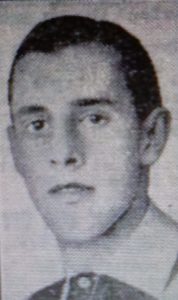
Karl Schmaderer
As expected, the favourite Karl Hamedl (1908-1996), the winner of main individual race in the Workers Olympics, won this Tour, taking two of the three stages. In first stage was won by Karl Schmaderer, Hamedl himself was a reserved, humble but easy-going man, who won often and his simplistic manner made him the darling of the crowds. After the Civil war, unlike Schmaderer and many of his other rivals, he chose to retire and after the Anschluss, he quietly tried to survive and carry out an everyday life in the occupied Austria.


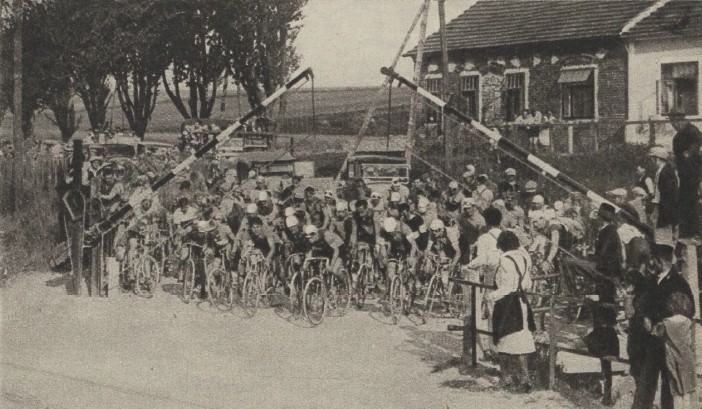
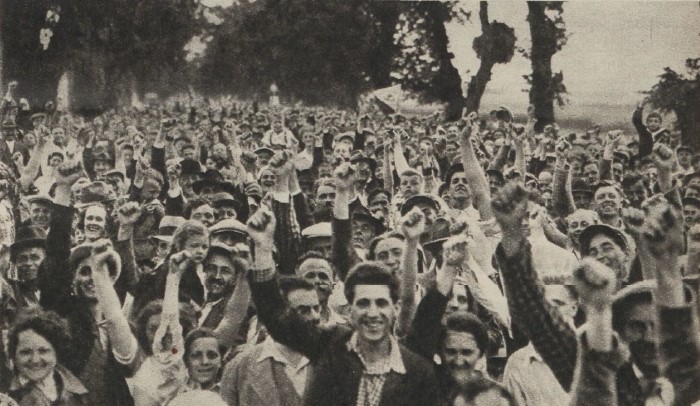
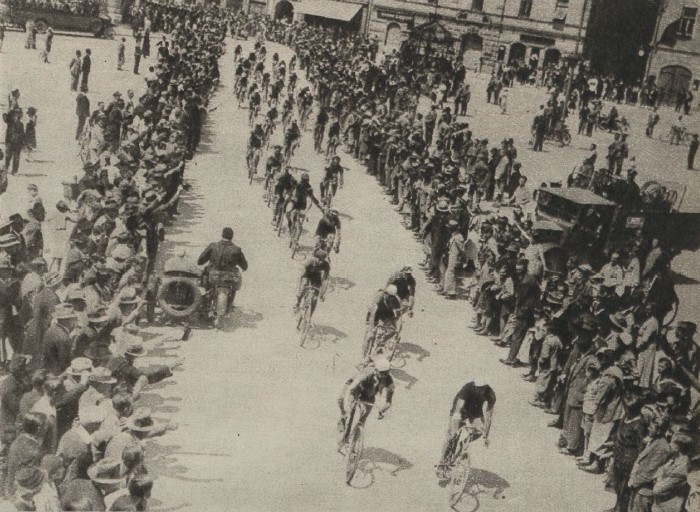

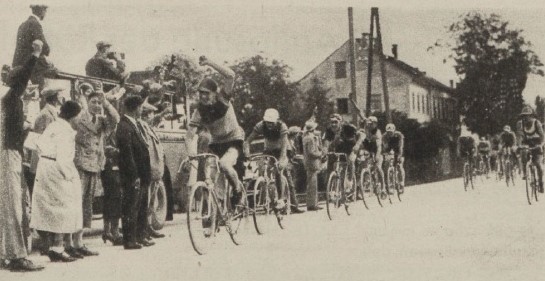
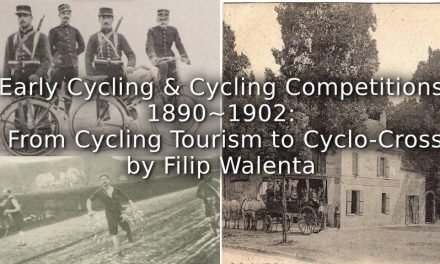


![“And then we were boycotted” <br> New discoveries about the birth of women’s football in Italy [1933] <br> Part 6](https://www.playingpasts.co.uk/wp-content/uploads/2020/04/PP-banner-maker-4-440x264.jpg)